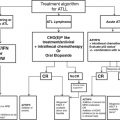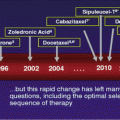© Springer International Publishing Switzerland 2015
Jean-Pierre Droz, Bernard Carme, Pierre Couppié, Mathieu Nacher and Catherine Thiéblemont (eds.)Tropical Hemato-Oncology10.1007/978-3-319-18257-5_39Bladder Cancer: A Perspective for Tropical Regions
(1)
Department of Urology, Stellenbosch University and Tygerberg Hospital, Tygerberg, South Africa
1 Epidemiology of Bladder Cancer in Tropical Regions
With the increase of bladder cancer with age, one can expect a higher prevalence as the life expectancy in tropical areas increases [1]. The two most common types of bladder cancer worldwide are transitional cell carcinoma (TCC) and squamous cell carcinoma (SCC). Transitional cell carcinoma is less prevalent in rural areas in developing countries as compared to developed countries. Squamous cell carcinoma is more common in areas where schistosomiasis is endemic [2, 3].
Bladder cancer is a relative rare disease in the African tropics. In Burkitt’s epic paper in 1966 where he described different diseases during his travel from the origin of the Nile river to the Nile delta, bladder cancer was not encountered in the tropical areas such as the origin prior to traversing the equator [4]. Cancer registries in the tropics are not common; however, a successful registry from Ghana serving much of West Africa exists. The findings on bladder cancer are very similar to Burkitt’s findings in 1966 – bladder cancer is scarce in the tropical areas of West Africa [5]. The incident rates (per 100,000) for males and females are in Ghana (1.1, 1.2), Cote d’Ivoire (0.5, 0.2), Niger (1.6, 1.4), and Nigeria (1.1, 0.2) with male predominance in most cases. This might be due to smoking habits, occupational/agricultural exposure, or difficulties in data gathering. The crude total cancer incident rates (per 100,000) for these countries are for males and females, respectively, in Ghana (21.3, 37), Cote d’Ivoire (18.7, 23.3), Niger (32.5, 48.8), and Nigeria (32.6, 42.6) placing bladder cancer as a relative rare cancer. Bladder cancer appears also to be rare in other tropical areas such as South America and Tropical Asia [2].
Ferguson, in 1911, linked the causal relationship between schistosomiases and bladder cancer in a description of 40 cases [6]. In North African countries like Egypt, with its southern part below the Tropic of Cancer, therefore in the tropics, SCC is common in men who perform agricultural work in the schistosomiasis-infested waters of the Nile. SCC presents on average 10–20 years younger than TCC and is usually more locally advanced [7, 8]. In Egypt, bladder cancer is as common as 12.7 % of all cancers in males. The crude incident rate (per 100,000 population) for all types of bladder cancer is 12.2 for Southern Egypt vs. 19 for Northern Egypt. The majority of these are SCC [9].
Risk factors for the development of TCC of the bladder include smoking, analgesic abuse, and industrial carcinogens. Risk factors for the development of SCC include exposure to chronic irritation, e.g., prolonged catheterization, and schistosomiasis. Exposure to schistosomiasis increases the risk of bladder cancer. Previous studies have shown that patients with TCC and SCC have similar outcomes of treatment if they are at a similar stage of the disease [7, 8, 10]. Late presentation is common in the tropics with 5-year survival of less than 22 % for bladder cancer in the Gambia and Uganda [11, 12].
Because of long-term survival and lifelong monitoring and treatment, the cost of care per patient from diagnosis to death is highest in bladder cancer than any other malignancy [6]. Cost of care is therefore an important impediment to optimal management of bladder cancer patients in low resource settings [2, 3].
2 Clinical Presentation and Special Investigations
Macroscopic hematuria remains an important finding. As patient with Bilharzia-associated bladder cancer often had macroscopic hematuria as a child, this is often not seen as an important sign to the patient until it is too late [11]. Dysuria and necroturia accompany the late presenting pathology in both SCC and TCC cases. Clinically, even in late presentation, there is very little difference between the different types of cancer except for the history mentioned above [3].
Bilharzia-associated bladder cancer presents with an earlier median age, more in males and less frequently with early disease (Ta, Tis, and T1). However, it presents with near-similar lymph node spread and distant metastases to non-Bilharzia-associated bladder cancer [3].
Should the facilities be available, bladder cancer in the tropics is investigated similar to other regions in the world. Note that patients might be malnourished and anemic due to late presentation. As chemotherapy is not always available, a simple metastatic workup (abdominal and chest X-rays, ultrasound of the abdomen) should be done prior to embarking on expensive computerized tomography (CT) scans. Once metastases are found, treatment should be palliative, not excluding a palliative cystectomy and diversion. With this sequence of investigations, much savings can be achieved in resource-poor environments. Cystoscopy and biopsy by resection remains the gold standard of making a diagnosis. However, in advanced cases, a Tru-Cut biopsy of the tumor via the rectum under antibiotic cover might save time and risks of an anesthetic.
3 Treatment Options in the Resource-Poor Tropical Areas
Early cancers are managed the same as elsewhere: either repeated resections and or intravesical immunotherapy if available. The problem lies with the urine diversion after the radical surgery.
3.1 Radical Cystectomy and Urinary Diversion
Urinary diversion after radical cystectomy is the gold standard treatment for patients with localized muscle-invasive bladder cancer (>T2). As mentioned above, it is also an option for high-risk patient with T1 disease. Ileal conduit and orthotropic neobladder are the two popular modalities of urine drainage after cystectomy. Both techniques are associated with metabolic complications. Ureterosigmoidostomy, which is rapidly becoming obsolete, is an alternative for continent urinary diversion. Its main disadvantages include recurrent UTI, anastomotic urocolonic cancers, and metabolic disturbances [13, 14]. The modified ureterosigmoidostomy (Mainz II) is a less morbid alternative, but still has problems. Nitkunan et al. report from a center of excellence that only 11 of 17 patients were continent with nocturnal incontinence being the biggest problem needing a diverting colostomy. Seven of these patients needed treatment for hyperchloremic acidosis. Only one patient suffered from recurrent upper tract urine infections. In the 4–8.6-year follow-up, no cancers were detected [15]. This type of surgery is a possibility, but still no panacea for urine diversion in tropical resource-poor areas, as, for example, might be difficult to treat electrolyte abnormalities. The author has seen an ingenious patient plan from Angola where a patient used four small Mopani tree sticks, two ropes, and a “disposable” amount of double shopping bags to make a near-perfect stoma bag. Desperate patients sometimes use condoms as disposable condom catheters if a neobladder leaks. Condoms are in some areas freely available for the fight against HIV.
Stay updated, free articles. Join our Telegram channel

Full access? Get Clinical Tree





